27-Inch IPS-Glass WQHD 60Hz OEM Monitor Review
John Williamson / 9 years ago
A Closer Look
The base has a glossy coating which attracts fingerprints, smudges and scratches in a very quick fashion. As a result, it’s exceedingly challenging to maintain an attractive finish which detracts from the display’s aesthetic appeal. At least the plastic is relatively sturdy and doesn’t feature any sharp edges. This means the base is ugly but functional.
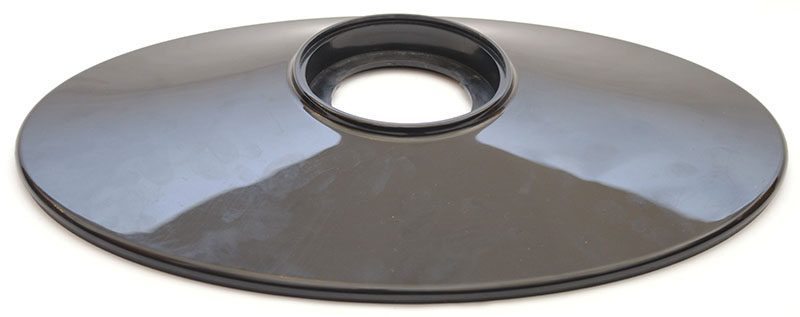
On the opposite side, there are four rubber feet with a textured design to stop the monitor from sliding around when it’s positioned on a desk. This underside section feels extremely light and I would have added a metal plate to improve the monitor’s stability once the base has been attached.
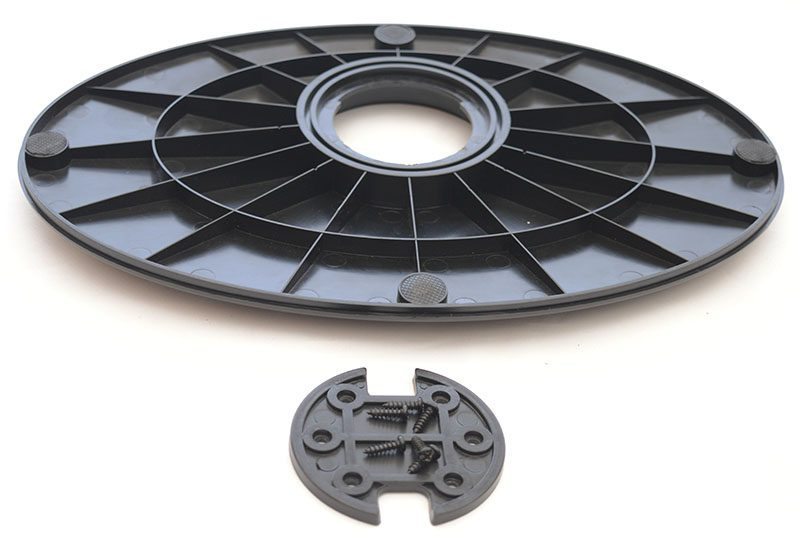
The stand slots into place using two clips and has a plastic mounting cover with six screws. Additionally, the stand is connected via four standard length screws which make it easy to fit a third-party alternative. Initially, I was a little confused by the mounting hardware and decided to remove the plastic cover then screw it into the stand once everything was aligned. Whether this is completely necessary remains unclear.
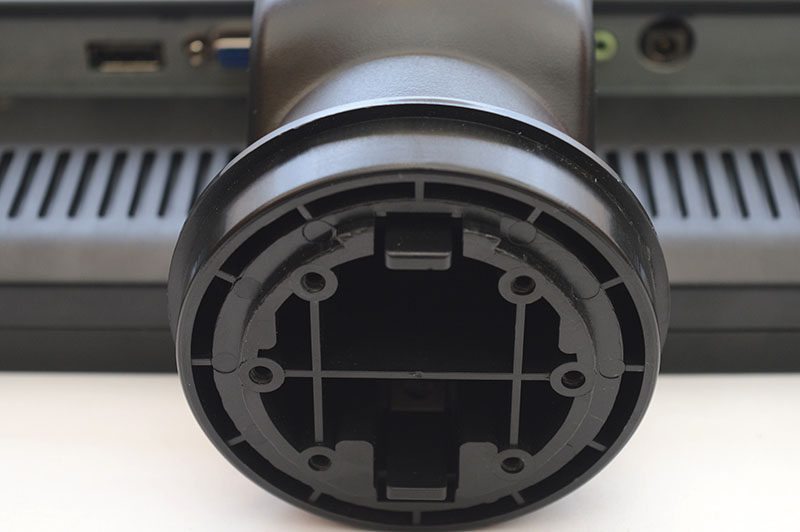
On the rear side, there are two 2W speakers and ventilation holes to keep the monitor running as intended. The speakers’ relatively high placement should direct the audio to your ears instead of being dispelled due to the monitor’s extremely low angle.
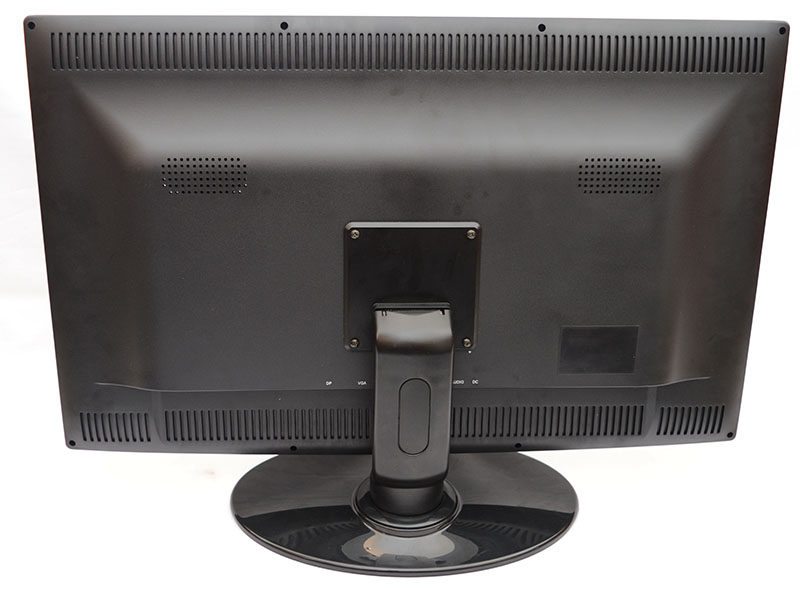
The display’s glass coating reflects every imaginable light source and doesn’t have any kind of mechanism to reduce glare. This is a byproduct of the glossy construction which exhibits a greater contrast range of deep colours compared to matte options. It’s something to take into consideration if you have sunlight shining directly where the display is going to be deployed.
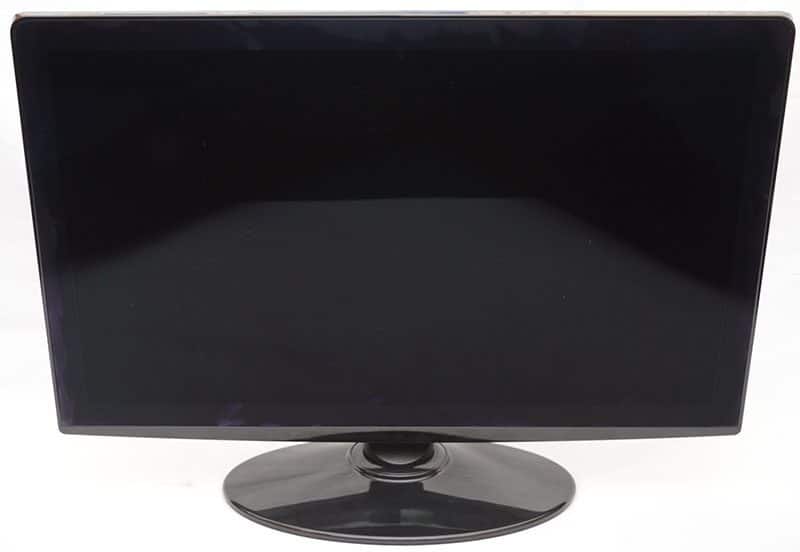
Here we can see the button arrangement to navigate around the OSD. Unfortunately, none of these are labelled which initially makes tweaking basic options an infuriating process. Thankfully, I adjusted to the buttons within 3 minutes and one could argue the lack of writing allows for a cleaner appearance.
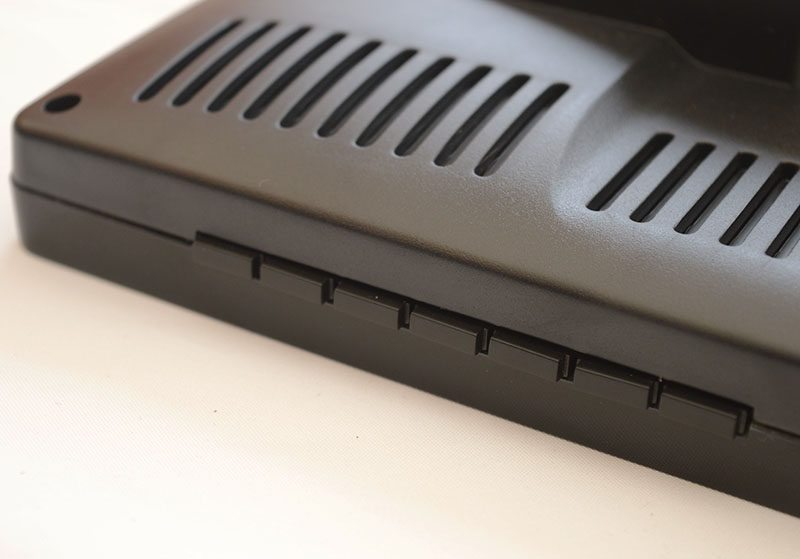
Unfortunately, the monitor is characterised by huge bezels which diagonally measure 3″ between the panel and edges. Furthermore, the bezels are even larger on the bottom portion and reach 3.5″.
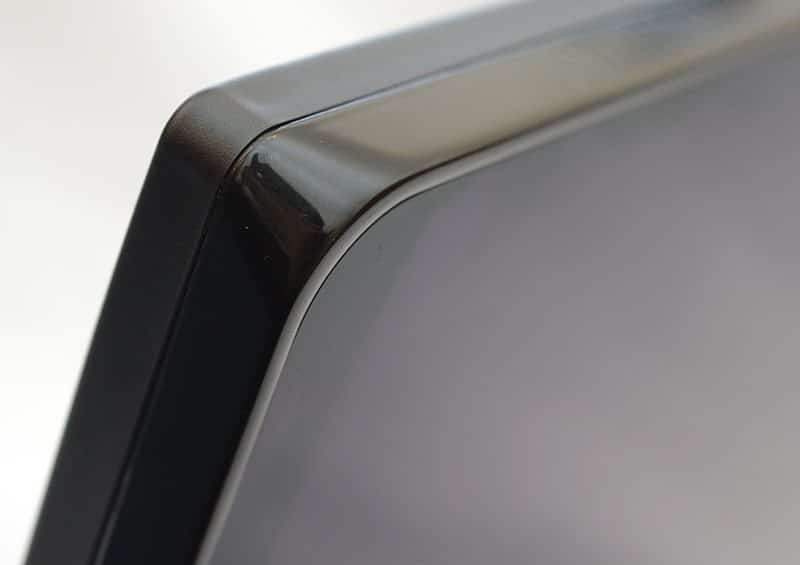
Connectivity-wise, the monitor includes a DisplayPort, VGA, DVI-D, HDMI, 3.5mm audio jack and power connector.
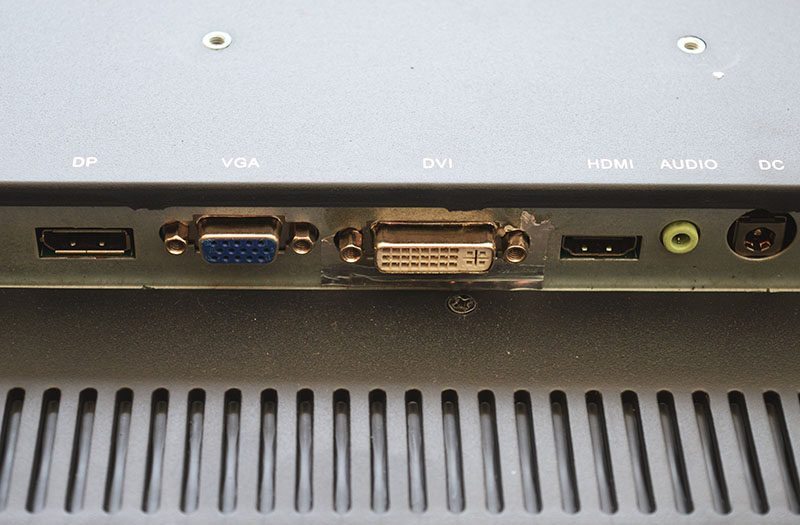
Menus
Despite the monitor’s fairly obtuse button arrangement, it’ surprisingly easy to browse each page and make a number of essential adjustments. The brightness page is useful to change the contrast, cycle between Eco modes and enable DCR.
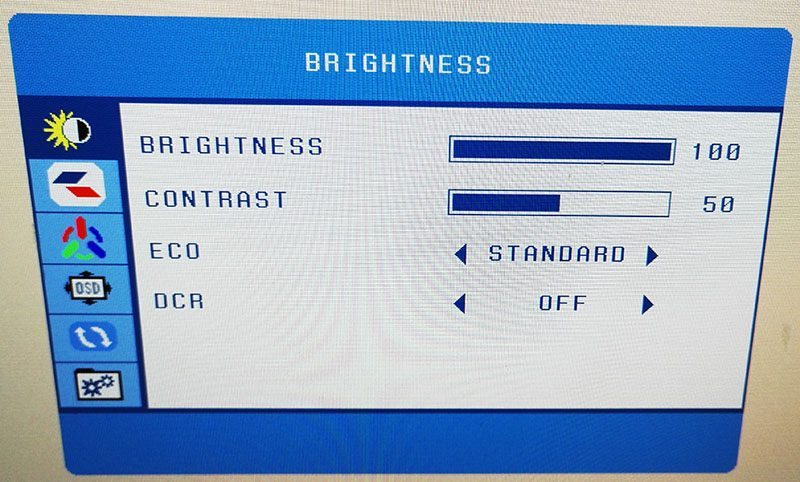
The image page allows you to customise the viewing area and choose between various aspect ratios.
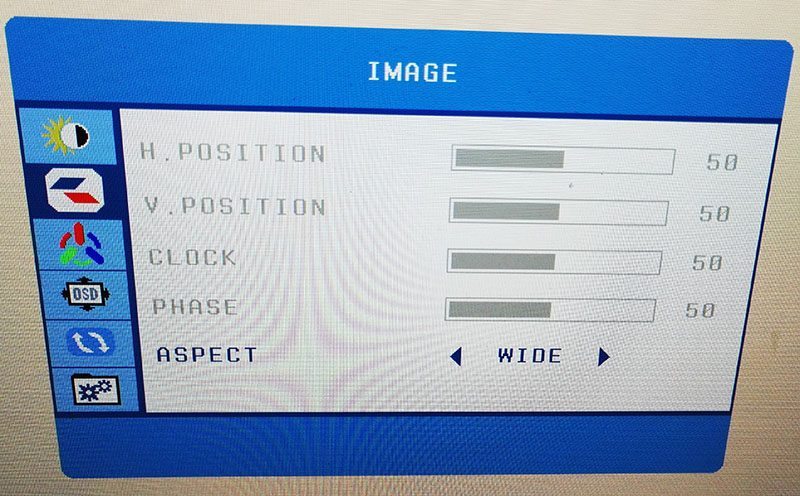
It’s even possible to alter the colour temperature and find a setting which you feel most comfortable with.
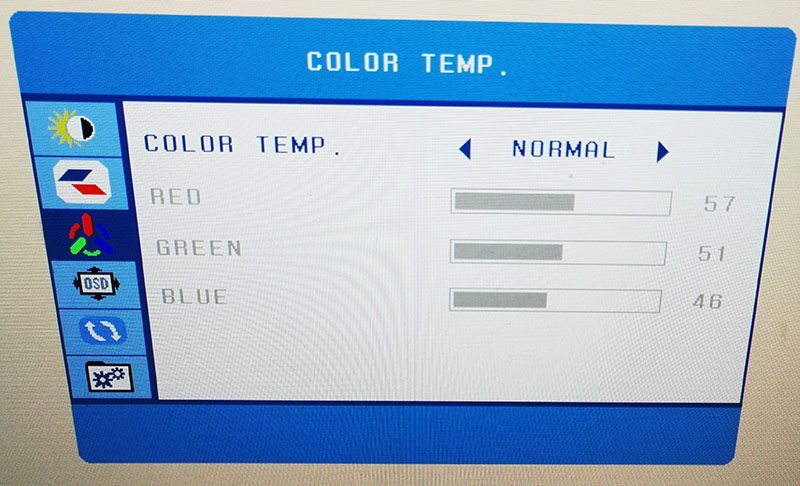
You can even change where the menu crops up just in case it’s being obscured by your desktop background.
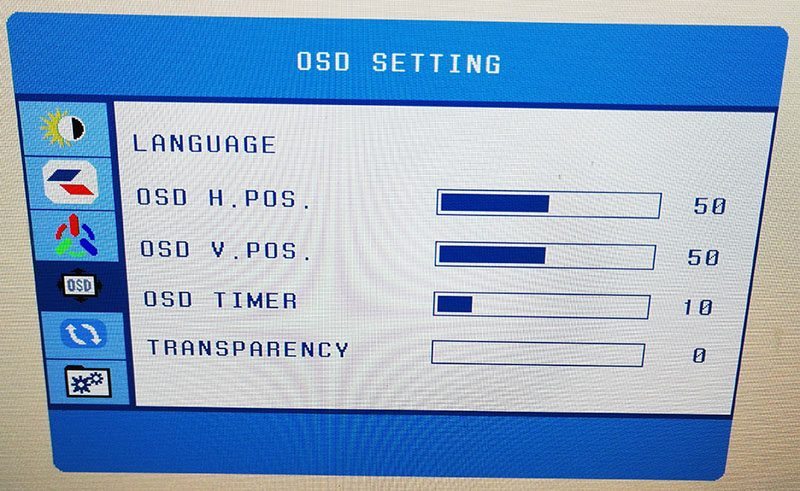
Next up is the reset menu which allows you to restore the panel to its factory settings.
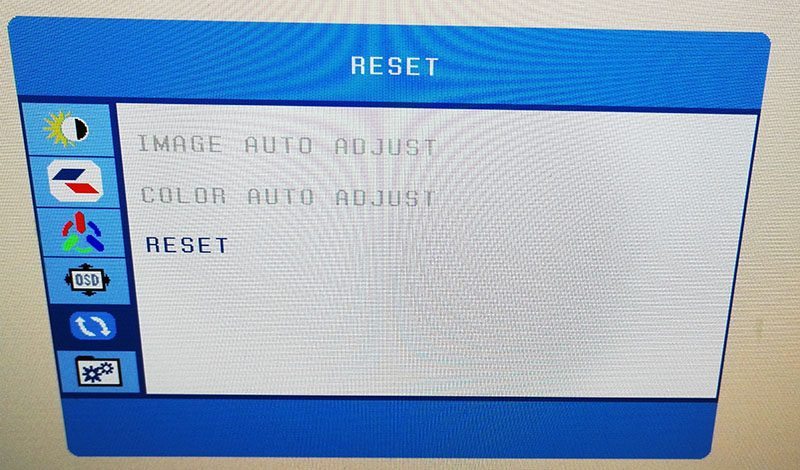
The miscellaneous page informs you of the current resolution, contains an option to tweak the volume and browse each signal source.
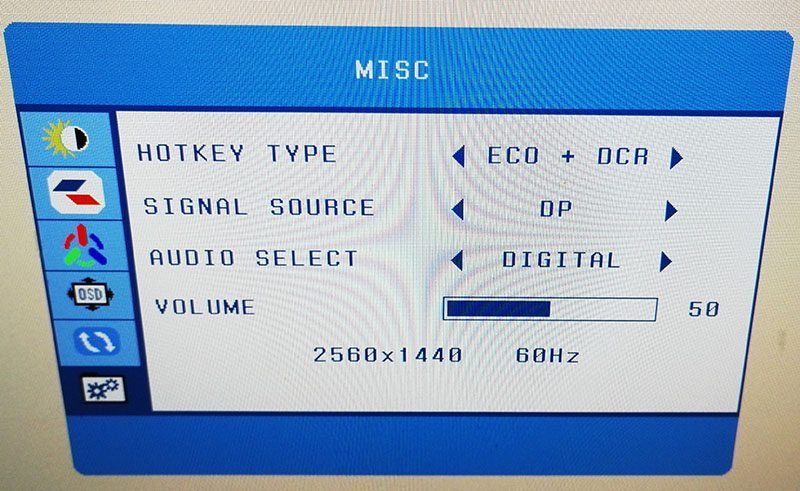
Functionality
As expected, the stand is terrible and struggles to keep up with the monitor’s weight. Theoretically, you can tilt the monitor but this requires an unbelievable amount of force and I was very hesitant about attempting this due to the amount of pressure required. The stand incorporates swivel functionality but the mechanism isn’t smooth and half the time you end up moving the entire monitor instead. This is due to the flimsy base which desperately needs some kind of additional support.



















